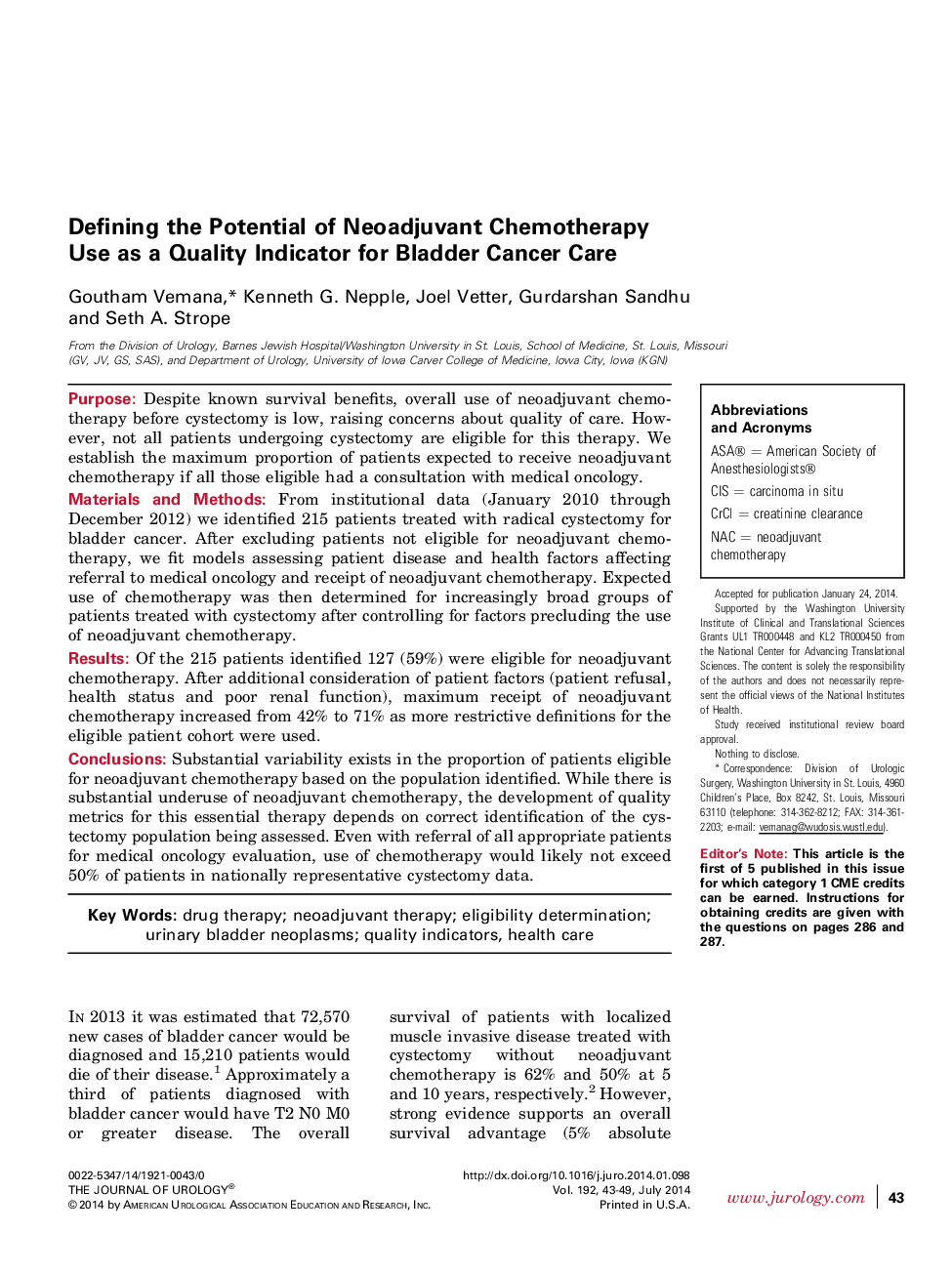| Article ID | Journal | Published Year | Pages | File Type |
|---|---|---|---|---|
| 3862034 | The Journal of Urology | 2014 | 7 Pages |
PurposeDespite known survival benefits, overall use of neoadjuvant chemotherapy before cystectomy is low, raising concerns about quality of care. However, not all patients undergoing cystectomy are eligible for this therapy. We establish the maximum proportion of patients expected to receive neoadjuvant chemotherapy if all those eligible had a consultation with medical oncology.Materials and MethodsFrom institutional data (January 2010 through December 2012) we identified 215 patients treated with radical cystectomy for bladder cancer. After excluding patients not eligible for neoadjuvant chemotherapy, we fit models assessing patient disease and health factors affecting referral to medical oncology and receipt of neoadjuvant chemotherapy. Expected use of chemotherapy was then determined for increasingly broad groups of patients treated with cystectomy after controlling for factors precluding the use of neoadjuvant chemotherapy.ResultsOf the 215 patients identified 127 (59%) were eligible for neoadjuvant chemotherapy. After additional consideration of patient factors (patient refusal, health status and poor renal function), maximum receipt of neoadjuvant chemotherapy increased from 42% to 71% as more restrictive definitions for the eligible patient cohort were used.ConclusionsSubstantial variability exists in the proportion of patients eligible for neoadjuvant chemotherapy based on the population identified. While there is substantial underuse of neoadjuvant chemotherapy, the development of quality metrics for this essential therapy depends on correct identification of the cystectomy population being assessed. Even with referral of all appropriate patients for medical oncology evaluation, use of chemotherapy would likely not exceed 50% of patients in nationally representative cystectomy data.
